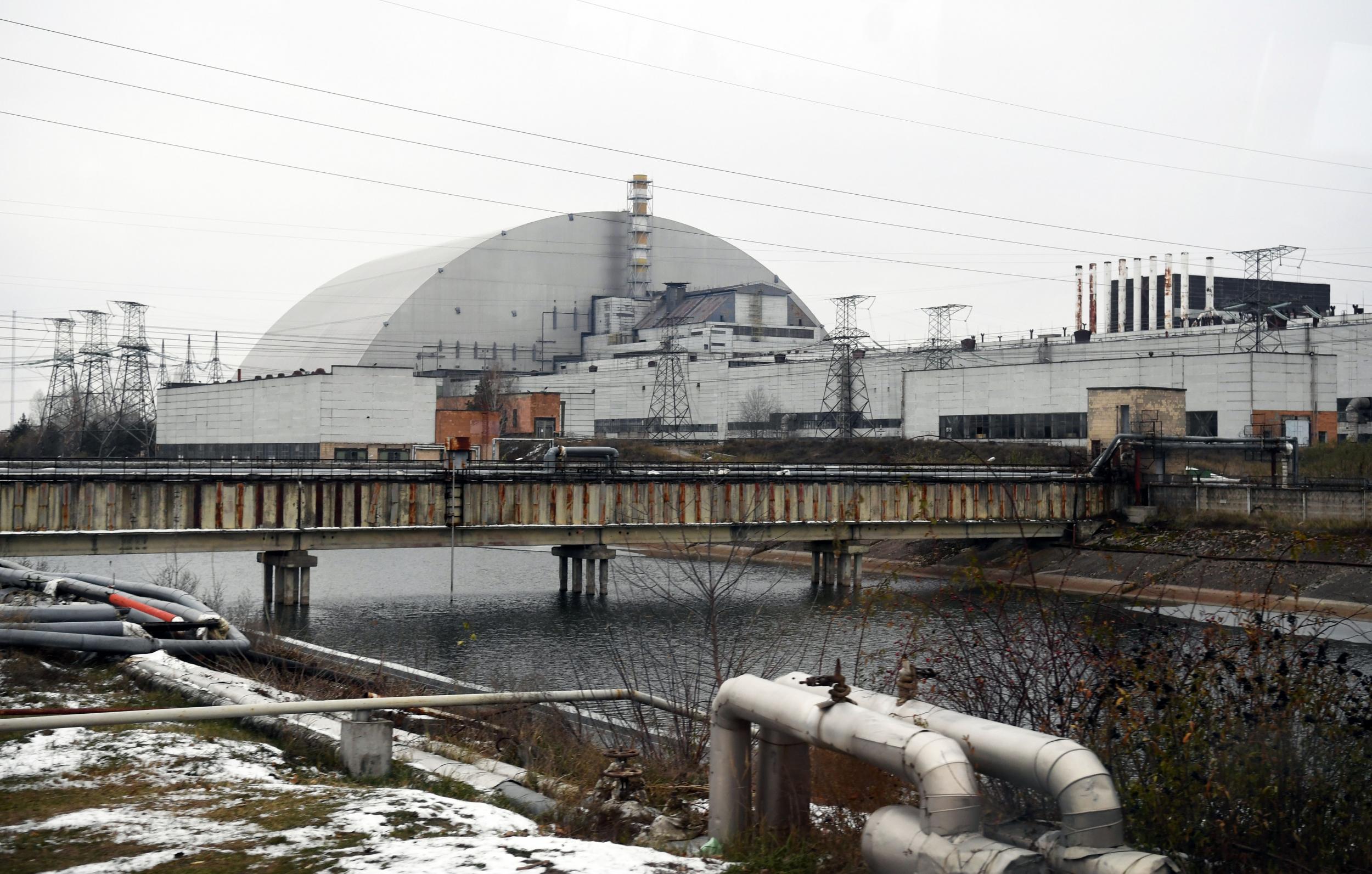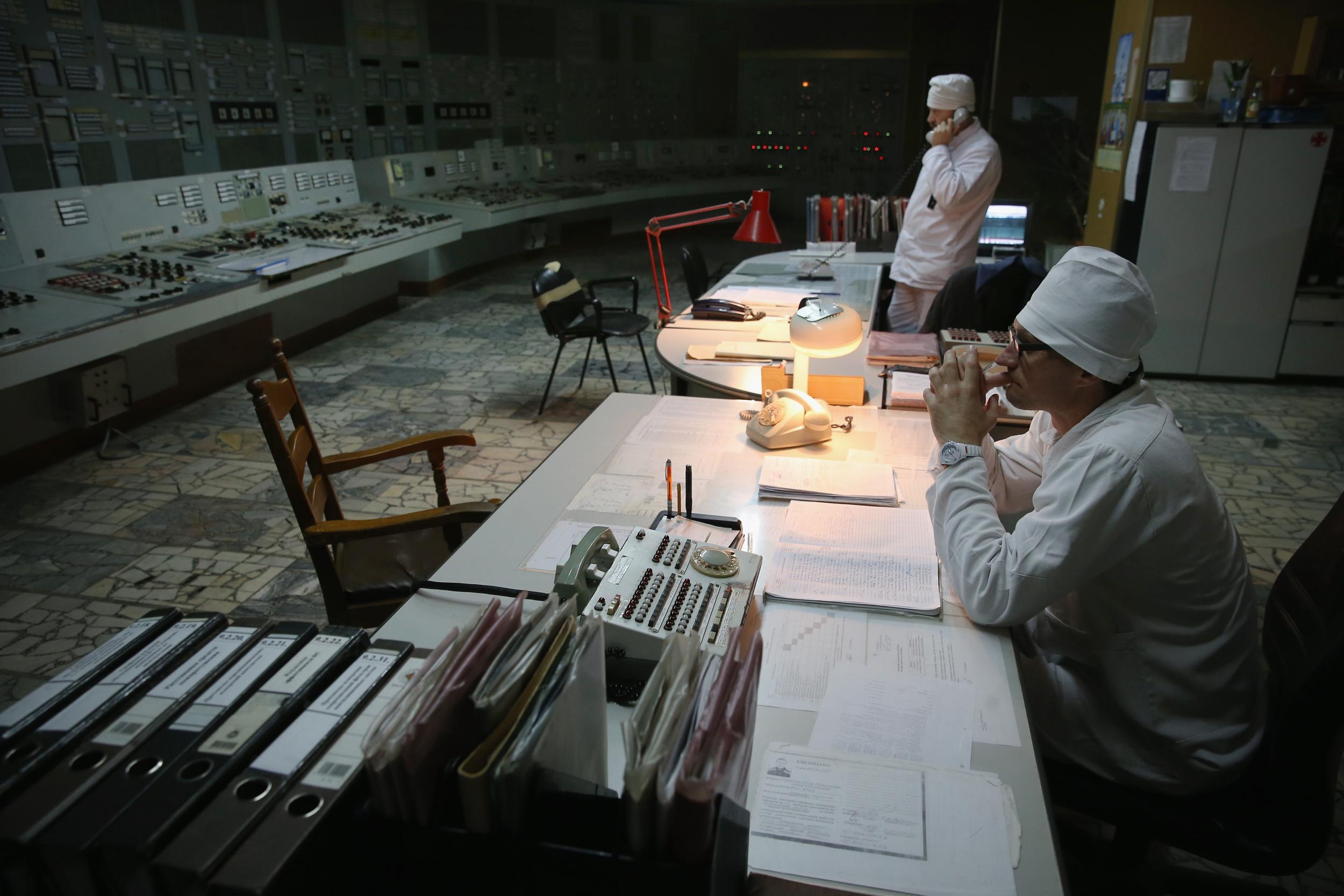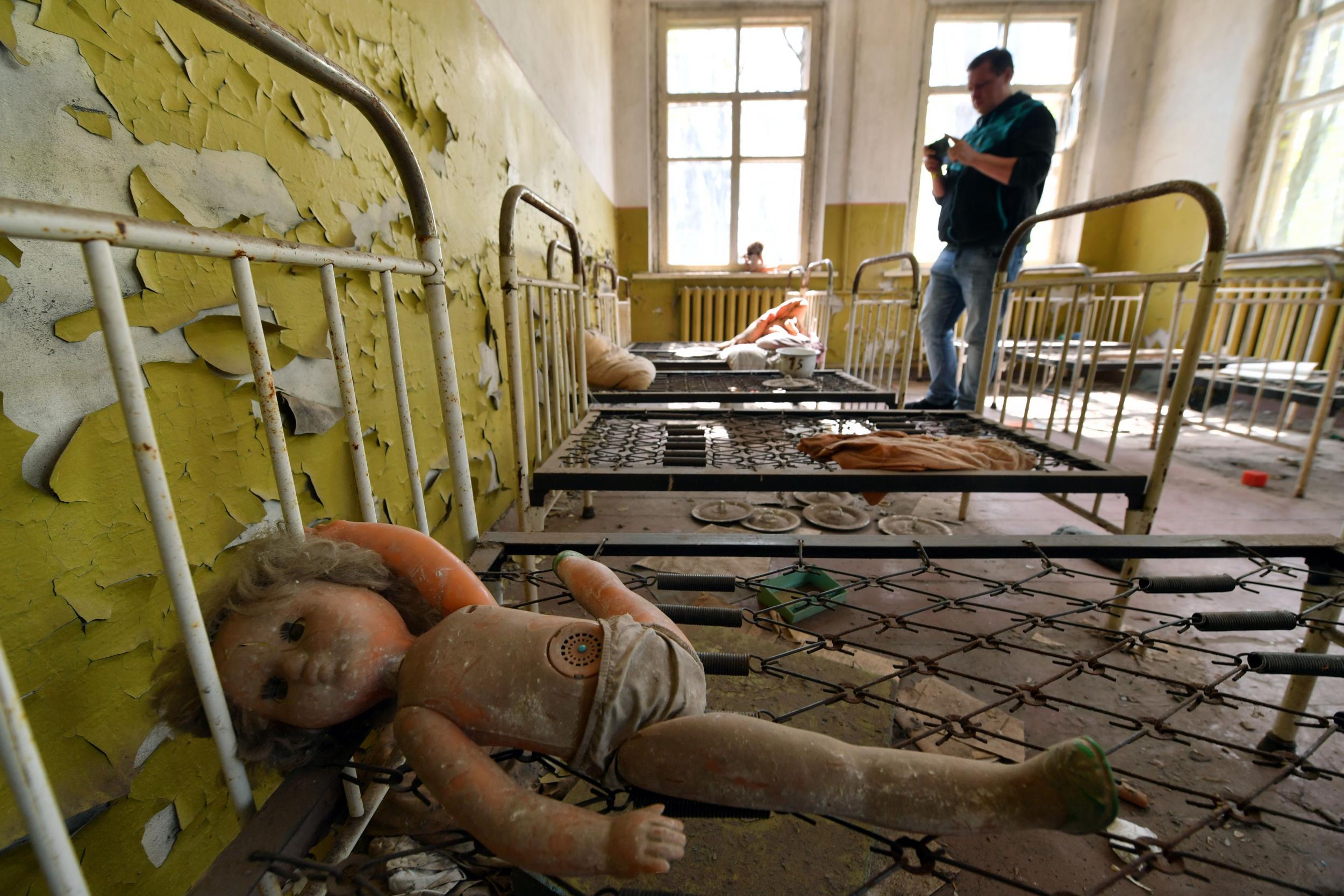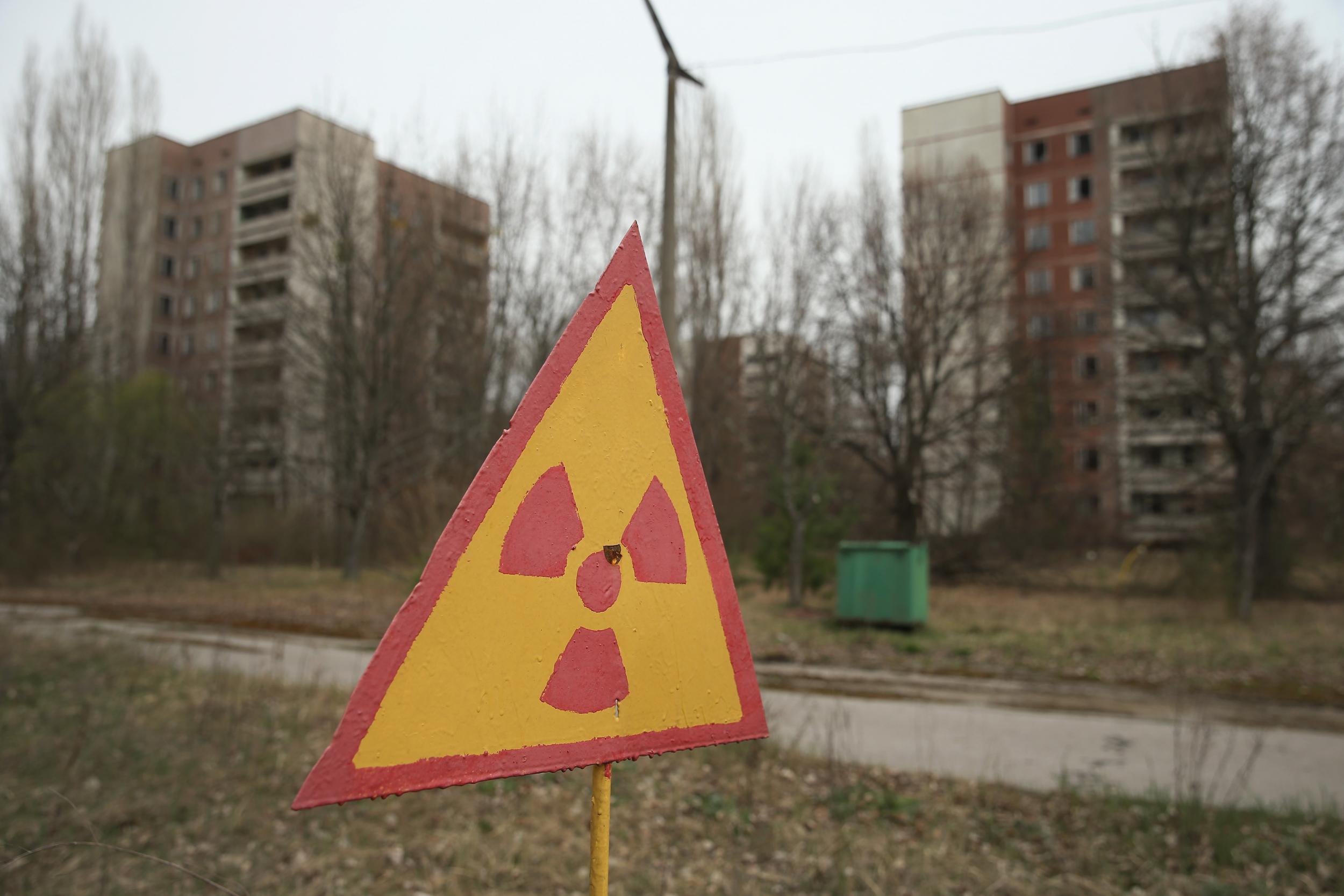
For most residents of Pripyat, Saturday 26 April 1986 seemed a relatively unremarkable day.
Some would have been aware of an incident at the nearby Vladimir Ilyich Lenin Nuclear Power Plant, around which the town had sprouted up in the decade prior, but, in the words of one off-duty engineer: “There was no panic. The city lived a normal life. People were sunbathing on the beach.”
But the warning signs were there.
Soviet Union officials were driving the streets, hiding their monitors as they gauged the levels of radiation washing over the pedestrians they passed. Traders had been warned not to sell fresh greens and cabbages at the local market, and street sweepers were washing the streets with foam.
But this had happened during a previous accident at the plant, of which there had been dozens in the past decade, and everything appeared to have been fine.
For Yuri Andreyev, who recounted this to BBC Ukraine 30 years later, it was only as he strolled to the far edge of the town with his daughter — a decision he said he would forever regret — and spotted Chernobyl’s fourth reactor “laying in ruins”, that he would realise something was seriously wrong.
Decades after the world’s worst nuclear accident, crucial elements still remain a mystery.
The likely death toll from the catastrophe is continually being revised to this day, the impacts of the fallout upon populations caught up in the nuclear slipstream — from Andreyev and his family to those living hundreds of miles away — still an active area of academic research.
Furthermore, the profound extent to which the accident, and the Soviet Union’s infamous handling of it, impacted the course of global history will never truly be known.
For the leader of the USSR at the time, Mikhail Gorbachev, the disaster wrought history anew. Rather than the collapse of the Berlin Wall, Chernobyl was “perhaps the real cause of the collapse of the Soviet Union”, he would later lament.
But, as with the disaster itself, the true starting point of such catastrophe is hard to pinpoint.

In the simplest sense, it began with a disastrous experiment during routine tests of reactor four. Technicians wished to see whether an emergency water-cooling system would work during a power outage and, shutting down the reactor’s emergency safety system, withdrew most of the control rods from its core while keeping the reactor running.
Moments after their re-insertion, at 1.23am, the resulting reaction caused a partial meltdown in the core, summoning a large fireball that blew the 1,200-tonne concrete and steel lid from the reactor, which would spew roughly 400 times more radioactive material into the atmosphere than the atomic bomb dropped on Hiroshima.
Two workers were immediately killed in the blast, which bent the plant’s thick concrete walls “like rubber”. Another plant worker, Sasha Yuvchenko, would later recall standing to watch as a pillar of blue ionising radiation ascended into the sky, “flooding up into infinity from the reactor”, reflecting: “I remember thinking how beautiful it was”.
Several hundred staff members and firefighters then tackled an inferno that blazed for 10 days. According to Andreyev, who was working that night, their dosimeters were taken away and they were told told to wash their shoes in manganese solution before entering, suggesting the radiation on the streets of Pripyat was feared to be worse than inside the incinerated plant.
The number of fatalities from this initial effort is still unknown, with the larger estimates suggesting 50 Soviet citizens lost their lives and scores more were hospitalised with gruesome and permanent injuries as a result of their efforts to protect their community. Until late 1986, the official death toll would recognise only the two who died in the immediate blast.
In those months, hundreds of thousands of emergency workers, troops, cleaners and miners were sent into the area during attempts to control the core meltdown and halt the spread of radioactive material, which would reach the US, China and northern Africa.
Dubbed “liquidators”, some 600,000 workers seeking to contain the spread were given special status that provided compensation in the form of fiscal benefits and additional health care.

While these liquidators were offered some compensation for their sacrifice, it appeared that Soviet authorities had known all along that there could be “accidents” at the nuclear plant.
Documents published decades later by the Ukrainian Security Service (SBU), initially sent to the KGB in Moscow, suggested Chernobyl was subject to significant flaws throughout its construction, as early as its design stage, indicating materials used were sub-standard and that technicians often ignored safety regulations.
In January 1979, a KGB report on the plant said: “According to operational data, there were deviations from design and violations of technology procedures during building and assembling works. It may lead to accidents”.
The documents, released by the SBU in 2003, revealed that between 1977 and 1981 there were 29 accidents at the nuclear plant.
In 1982, another incident releasing what the documents described as “significant quantities of radiation” would lead officials to engage in a significant cover-up effort, but this relatively minor event merely foreshadowed the scale of the deception that would come four years later.
While engineers and firefighters toiled to extinguish the blaze in the days following 26 April, officials sought to bury the true scale of the disaster from the outside world, and to uncover suspected foul play — interrogating first responders such as Yuvchenko as they lay in hospital watching their bodies decay.
The more immediate response was guided by a litany of deadly miscalculations from officials, whose dosimeters were unable to process the vast amounts of radiation, allowing them to believe the reactor remained intact.
Some workers would defy orders, with Andreyev recalling how he and other colleagues, none of them wearing protective gear, shut off the other nuclear reactors in what he described as a lifesaving measure.
Approximately 36 hours later, as officials began to acknowledge the huge scale of the problem, the order was given for Pripyat to be evacuated for three days. Most residents would never return.

Efforts to downplay the scale of the disaster began within government itself — infamously exemplified by the Soviet foreign affairs minister’s attempt to allay a more senior official’s concern for residents’ health with the assertion that they were celebrating weddings, gardening, and “fishing in the Pripyat River”.
Three days later, the alarm was raised by Sweden, where the radiation was picked up at a nuclear plant.
The Soviet Union denied that an incident had occurred, but with Denmark, Finland and Norway also voicing concerns shortly afterwards, it eventually became impossible to hide the accident from the international community.
However, Moscow continued to downplay the true scale of the catastrophe, failing to tell even its own citizens to stay indoors and allowing the capital’s May Day parade to go ahead a week later. The ensuing secrecy surrounding the handling of the disaster in the years that followed, and the reluctance to warn citizens of the scale of the danger they continued to face, means the true toll is continually being revised.
The resulting suspicions that Moscow could not be trusted to tell the truth had directly devastating effects.
It is believed that up to 200,000 women across western Europe chose to end wanted pregnancies on the mistaken advice of doctors who were mistrusting of the Soviet Union’s official line on radiation levels and who feared a possible rise in birth defects. There was no such increase in babies born with congenital defects, the World Health Organisation would conclude in 2005.
One estimate by Kiev’s National Research Centre for Radiation Medicine suggests that in the former Soviet Union alone, five million people have suffered as a result of Chernobyl.
More than 5,000 people who were children at the time living in the affected areas in Ukraine, Russia and Belarus, have since developed thyroid cancers, which the UN attributes to radiation exposure.
While 330,000 people were moved out of the area, which now suffers far higher levels of poverty than other parts of the former Soviet Union, the upheaval proved “deeply traumatic” for many, according to the Chernobyl Forum.
A 2005 report by the UN group found: “Even when resettlers were compensated and offered free houses, many retained a deep sense of injustice. Many are still unemployed, without a place in society and have little control over their lives. Some older resettlers may never adjust.”
Amid decades of concern of a predicted rise in cancers, clear scientific evidence of which is hard to ascertain, the psychological toll upon those still living in the affected zones is clear, with residents tending to be more likely to suffer with their mental health or alcohol abuse.
Meanwhile, first responders are often forced to contend not only with the trauma of the event, but also a lingering stigma that has sometimes seen them shunned by peers fearful of a false radiation risk.

“I try not to talk about it. I don’t want people to know about it,” Yuvchenko told the New Scientist in 2004, at which point he still had to receive “constant” skin grafts.
“I have been given two medals, an order of honour for my actions that night and a medal 10 years afterwards, but everybody got one of those. I try to get on with my everyday life. My neighbours don’t know who I am. There is a stigma attached to it.”
In 2007, a study of nearly 5,000 men involved in the cleanup effort between 1986 and 1991 found they suffered an increased risk of suicide, describing their findings as “concrete evidence that psychological consequences represent the largest public health problem caused by the accident to date”.
It may have also proved fatal for the Soviet Union itself, which collapsed fewer than six years later — with the intermediate period defined by public calls for greater transparency amid suspicions and anger over a perceived lack of public safety.
Gorbachev, the last leader of the USSR, would define Chernobyl as a “turning point”, which “opened the possibility of much greater freedom of expression, to the point that the system as we knew it could no longer continue”. It would strengthen his conviction in pursuing his perestroika (”reformation”) and glasnost policies, which celebrated the openness of ideas after years of a USSR famed for its “culture of secrecy”.
As these policies invited increasing criticism of the USSR, the apparent secrecy with which the Chernobyl disaster was handled gradually eviscerated people’s trust of their government, which eventually lost control to a public fraught with concern over radiation levels.
While Chernobyl remains a cautionary tale to governments the world over — many of whom financed a £1.5bn sarcophagus to confine the reactor for another century, completed in 2019 — the area itself is effectively a ghost town.
Save for a few residents who refused to leave their homes, the 18-mile exclusion zone has gradually been repopulated by wildlife, including boars, wolves, beavers and bison.
Despite the dangers posed by the area — which is expected to be contaminated for another 24,000 years — researchers have suggested the animals are flourishing because the radiation poses less risk than the presence of humans.







